-
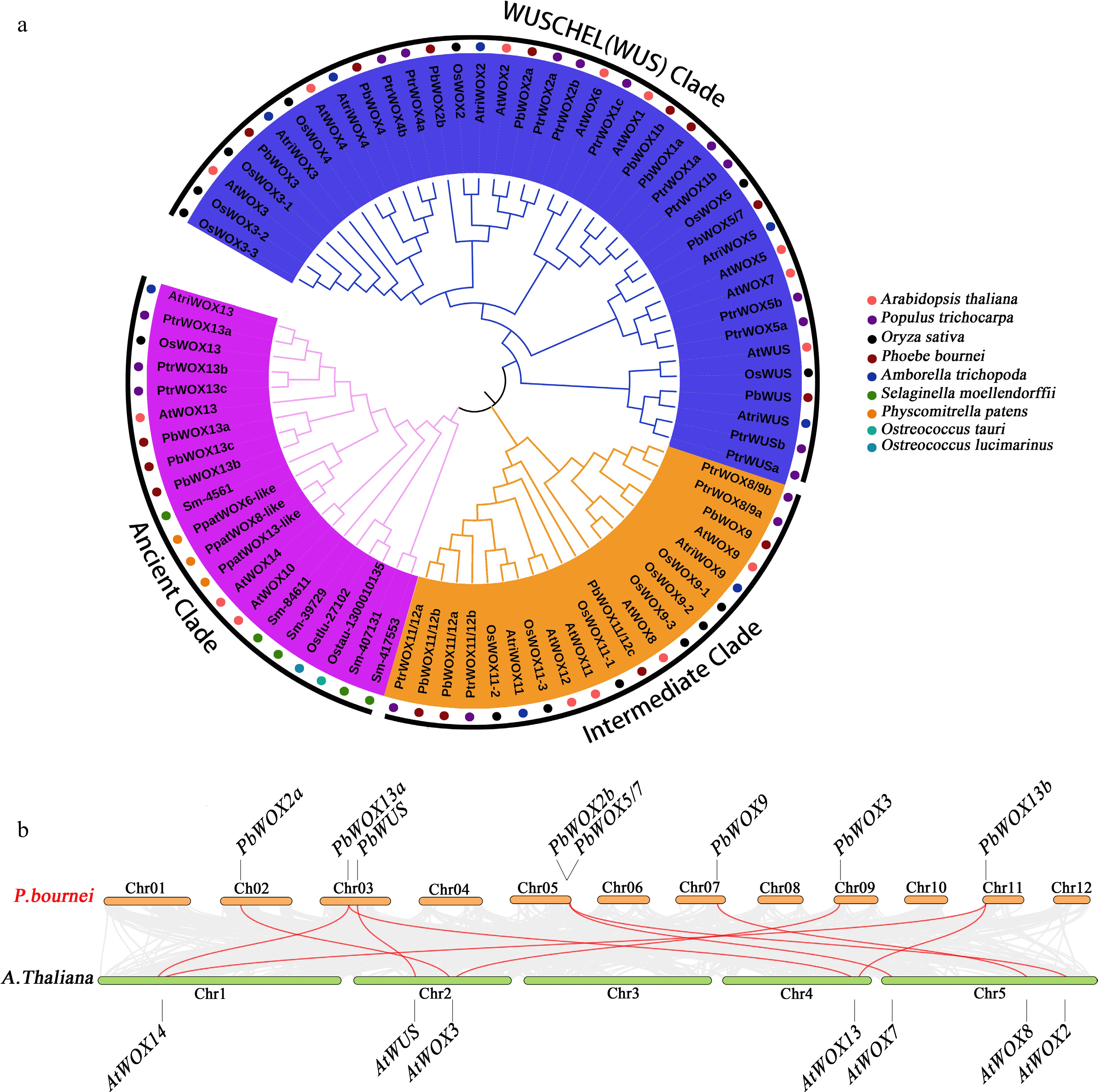
Figure 1.
Phylogenetic relationships of PbWOX proteins. (a) NJ tree constructed of the amino acid sequence of WOXs from Phoebe bournei (Pb), Arabidopsis thaliana (At), Populus trichocarpa (Pt), Oryza sativa (Os), Amborella trichopoda (Atri), Selaginella moellendorffii (Sm), Physcomitrella patens (Ppa), Ostreococcus tauri (Ostau) and Ostreococcus lucimarinus (Ostlu). (b) Synteny analysis of WOX genes between P. bournei and A. thaliana. Gray lines indicate all synteny blocks in the genome, and the red lines indicate duplicated WOX gene pairs.
-
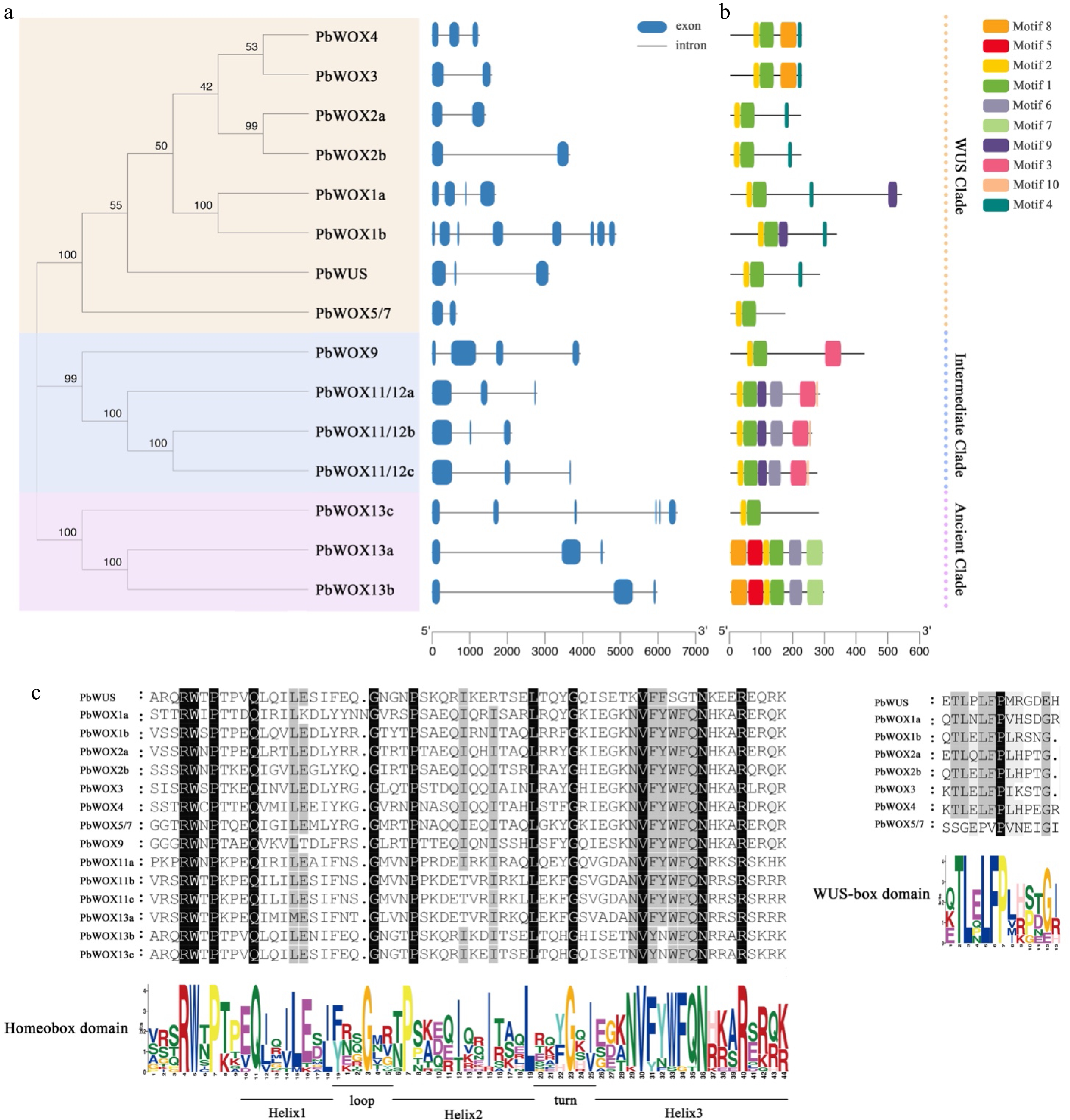
Figure 2.
Information on the PbWOX genes and proteins. (a) Phylogenetic tree and gene structure. (b) Architecture of conserved protein motifs. (c) Multiple sequence alignment.
-
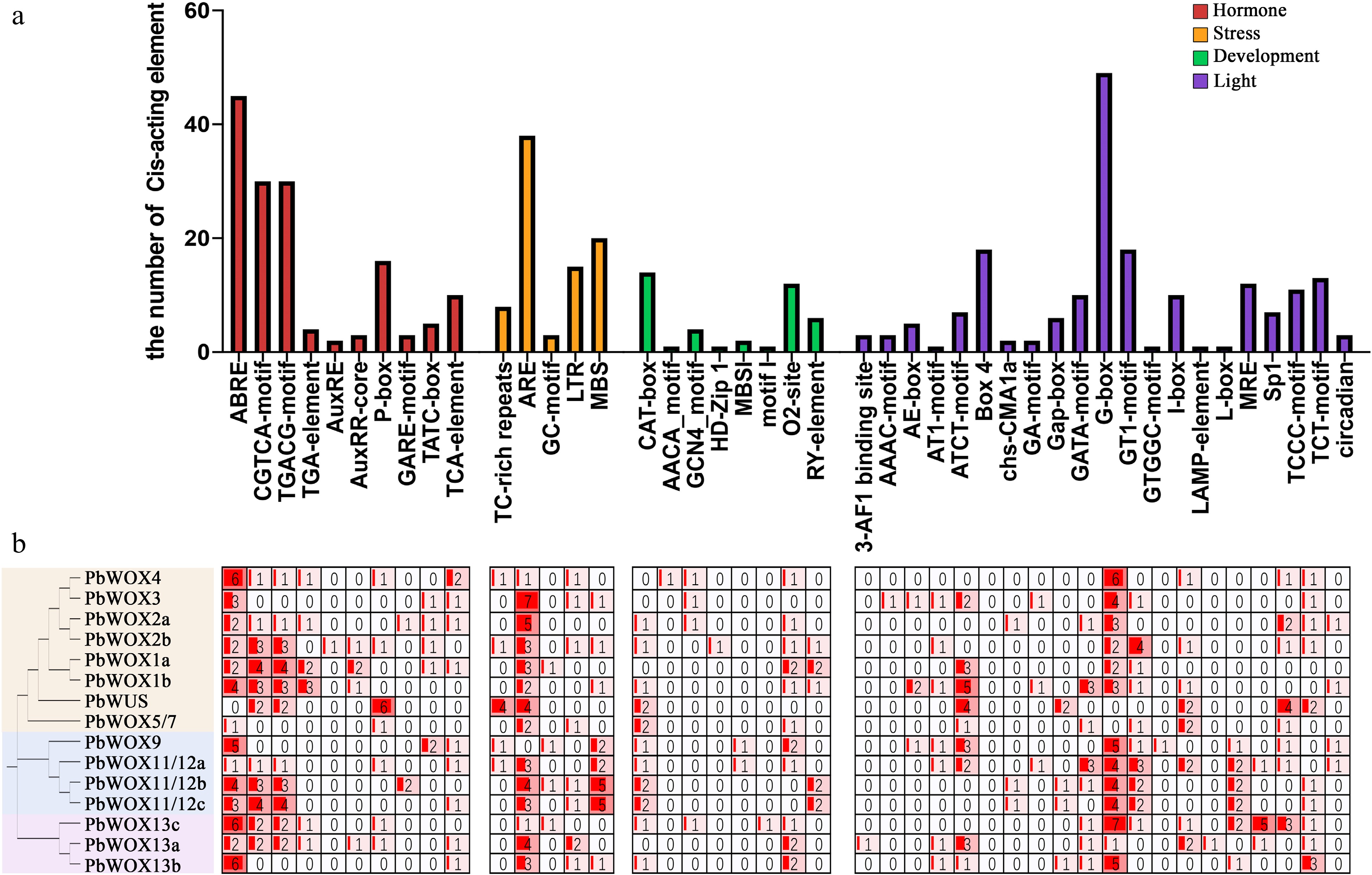
Figure 3.
Predicted cis-acting elements in PbWOX promoters. (a) Frequency of cis-acting elements in the 2.0 kb upstream regions of PbWOXs. The corresponding colored bar chart indicates the occurrence of different cis-acting elements. (b) Number of cis-acting elements in each WOX gene.
-
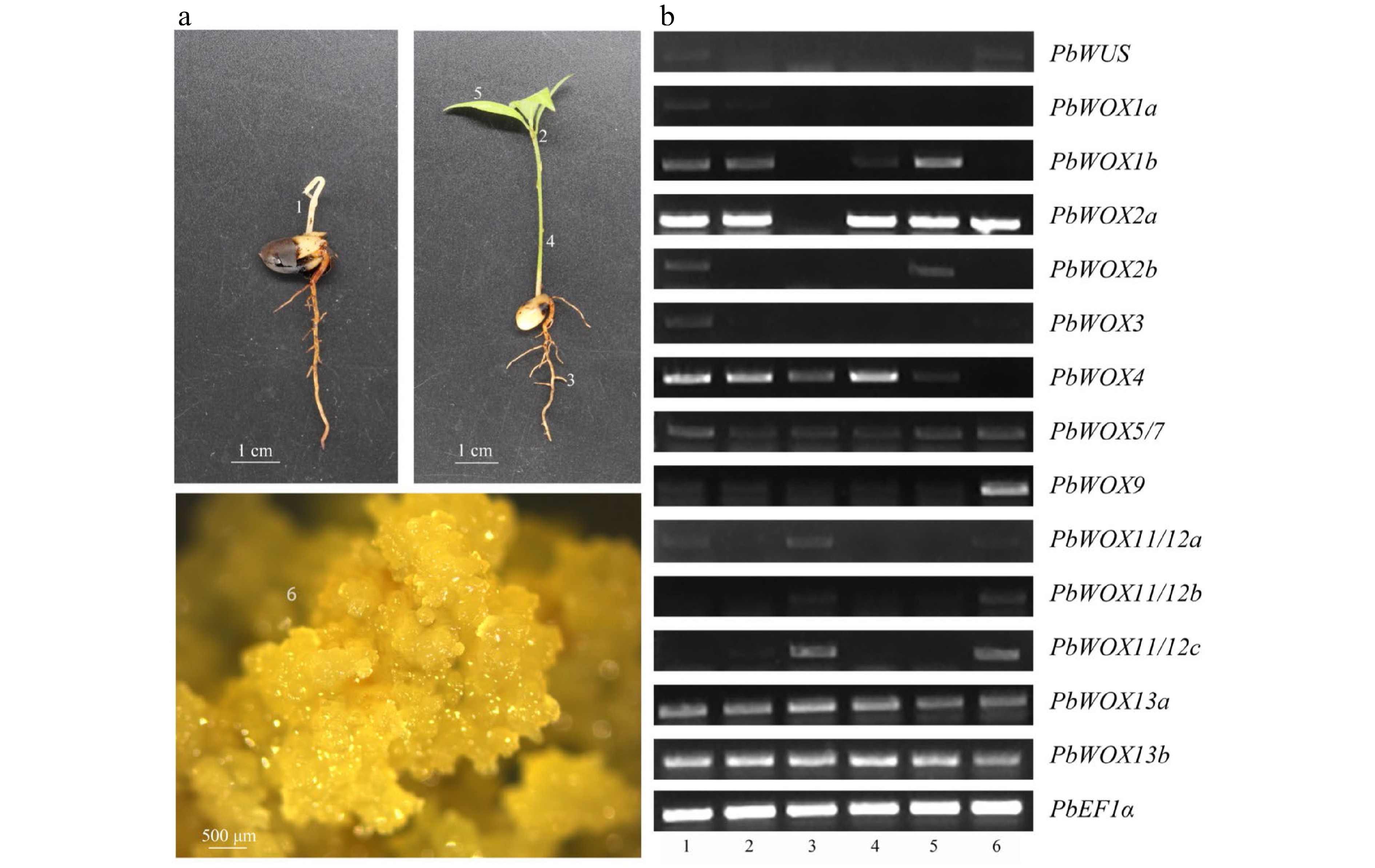
Figure 4.
Semiquantitative analysis of PbWOXs in different tissues. (a) Tissue samples, 1 - epicotyl, 2 - stem tip, 3 - root, 4 - stem, 5 - leaf, 6 - calli. (b) Semiquantitative PCR electropherogram.
-
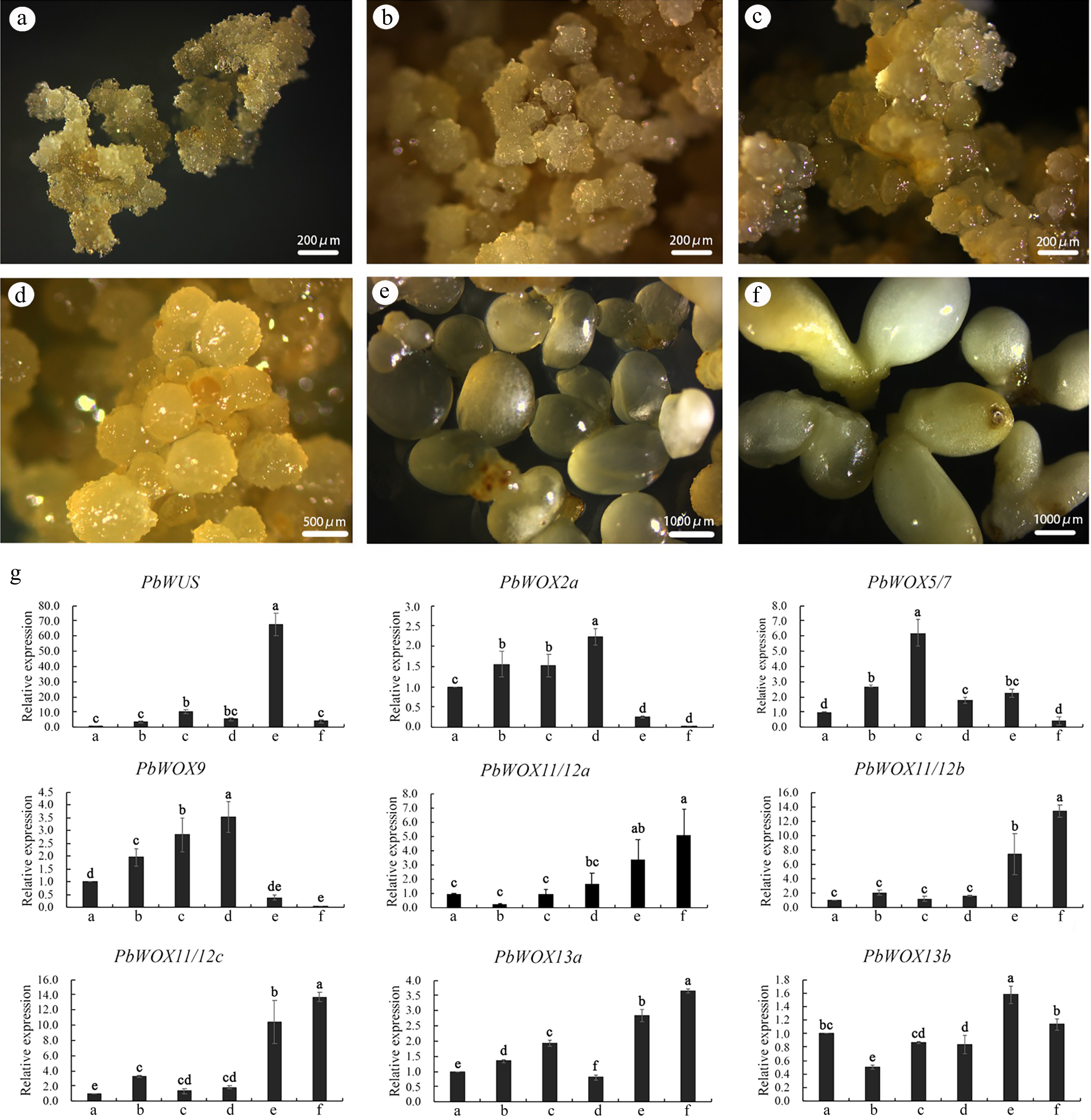
Figure 5.
Expression patterns of PbWOXs during SE of P. bournei. (a) Calli-1. (b) Calli-2. (c) Calli-3. (d) Globular embryo. (e) Immature cotyledon-producing embryo. (f) Mature cotyledon-producing embryo. (g) Analysis of gene expression via qPCR. The data are the means ± SDs of three biological replicates. The values followed by the same letter are not different according to Duncan’s multiple-range test. PbEF1α was used as an endogenous control.
-

Figure 6.
Relative expression levels of PbWOXs under hormone treatment. The data are the means ± SDs of three biological replicates. The values followed by the same letter are not different according to Duncan's multiple-range test. PbEF1α was used as an endogenous control.
-
Taxonomic group Species Ancient clade Intermediate clade Modern/ WUS
cladeTotal Dicots A. thaliana 3 4 8 15 P. trichocarpa 6 7 11 18 Monocots O. sativa 1 6 6 13 Magnoliales P. bournei 3 4 8 15 Amborellales A. trichopoda 1 2 5 8 Pteridophyta S. moellendorffii 6 1 − 7 Bryophyta P. patens 3 − − 3 Chlorophyta O. tauri 1 − − 1 O. lucimarinus 1 − − 1 Table 1.
Subclass information of WOXs among P. bournei and other representative species.
-
Gene ID Gene name Orthologous in Arabidopsis Theoretical pI Molecular weight Number of amino acids OF24054-RA PbWUS AtWUS 8.58 31622.96 276 OF03970-RA PbWOX1a AtWOX1 9.37 37209.6 328 OF11837-RA PbWOX1b AtWOX1 8.89 59188.97 528 OF19048-RA PbWOX2a AtWOX2 7.09 24524.5 218 OF05256-RA PbWOX2b AtWOX2 6.83 24496.61 219 OF16243-RA PbWOX3 AtWOX3 9.05 22752.66 194 OF04424-RA PbWOX4 AtWOX4 8.25 24797.85 220 OF05362-RA PbWOX5/7 AtWOX5, AtWOX7 9.51 19371.68 169 OF24594-RA PbWOX9 AtWOX9 7.19 45272.57 413 OF22069-RA PbWOX11/12a AtWOX11, AtWOX12 5.68 30055.89 268 OF11766-RA PbWOX11/12b AtWOX11, AtWOX12 5.95 30330.35 277 OF28194-RA PbWOX11/12c AtWOX11, AtWOX12 5.48 27450.91 252 OF25757-RA PbWOX13a AtWOX13 5.91 32705.61 288 OF14063-RA PbWOX13b AtWOX13 6.10 32380.27 286 OF07768-RA PbWOX13c AtWOX13 9.93 31294.66 272 Table 2.
Summary of the PbWOX gene family members.
Figures
(6)
Tables
(2)